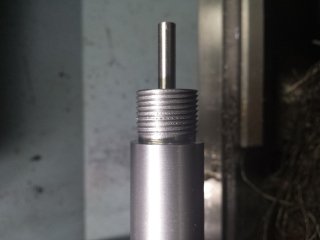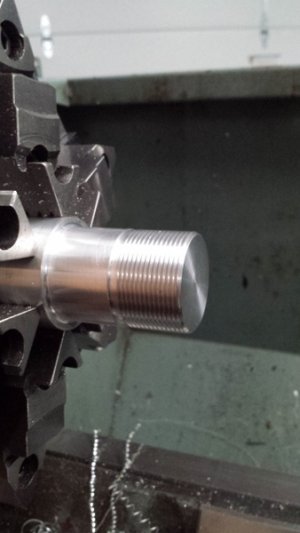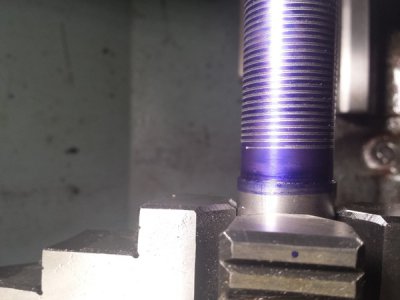Thank you for the responses.
The lathe is a Taiwanese made ACER 1236, 70s vintage.
Have to give full disclosure. I wanted to try internal threading so I got a couple of short schedule 80 PVC pieces for material. All was well, the first pass went well, then I got interrupted and had to stop. Upon resumption of work I dialed the cross slide in back to zero, and engaged the half nuts on the number. Since I retract full rev when threading, this time senior moment took over, I forgot that I already cranked in to zero before I got interrupted. As usual I dialed the compound and so when I cranked the cross slide back zero I put in 0.1 additional.
I was lazy to change to 6J before I started, so when the cutter dug in it flipped the material out of the 3J and stalled the motor. Hit the eStop and released the locked up mess. The half nut lever was real hard to disengage. Immediately I chucked in a 1 inch barrel stub and checked the threading, external this time. After setting the system I made the initial pass, and without advancing the compound I made another pass and another, all 3 did not superimpose.
To forget about the misfortune, the rest of the day I played with dialing a barrel blank using 2 spiders.
Before I went to bed I chucked in a barrel stub, cut the tenon and threaded it 16 TPI. I took my time and meticulously went through the process hoping for a better outcome from the test I did after the mishap. The thread came out atrocious. I took a picture of the finished threading job, if you expand the picture you can see the faint lines made by the cutter.

For comparison, here is one I took sometime back. I know 2 different materials, but as you can see there are no multiple lines on the threads.




